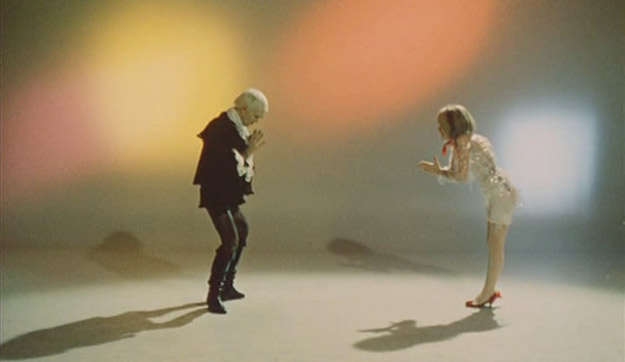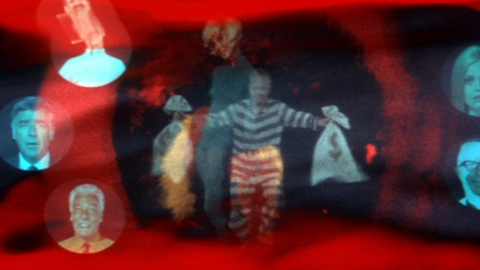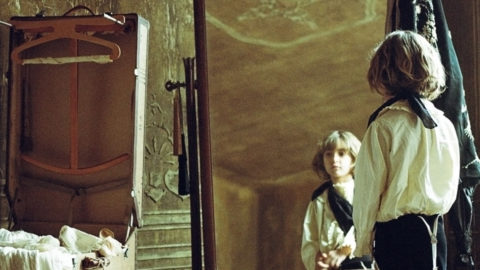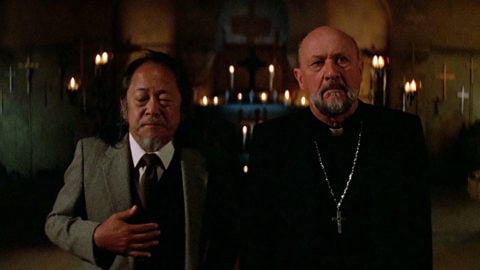Deep Cuts: Yé-yé
Some reading music: listen to this week’s special mix below. (See the full track listing.)

Les Idoles
Yé-yé, a kitschy subgenre of French pop that flourished during the 1960s, has a definite look: cute women with short haircuts or long bangs, men in preppy clothes or motorcycle garb, short skirts, high boots, and the feeble presentation of innocence. Yet despite its dominance of radio, television, and magazines in France, yé-yé never fascinated the film world as much as other musical genres, though French actresses such as Anna Karina and Brigitte Bardot took up brief side careers as yé-yé girls. There were minor films—Devil at My Heels (1966), starring Françoise Hardy, and Where Are You From, Johnny? (1963), starring Sylvie Vartan and Johnny Hallyday—featuring yé-yé artists in starring roles. But of the two most notable films that incorporate the yé-yé industry into their plots, neither offer positive views of the culture: Jean-Luc Godard’s Masculin féminin (1966) and Marc’O’s Les Idoles (1968) sharply criticize the genre though without stifling its inherent catchiness.
Yé-yé culture began to sprout as early as 1962, when the popular radio program Salut les copains (“Hello, pals”) branched out into a magazine geared toward hip French youth, and in 1963, sociologist Edgar Morin coined the term “yé-yé” in the pages of Le Monde. A year later, Susan Sontag name-checked the genre in her famous essay “Notes on Camp,” citing yé-yé as an example of Camp’s purely aesthetic, extravagant sensibility emphasizing style at the expense of content. With regard to yé-yé music, and certainly the culture surrounding it, her description was right on the mark. As Larry Portis observes in his book French Frenzies: A Social History of Pop Music in France, whereas American pop music was created by artists who were influenced by country, blues, and gospel, French pop was entirely influenced by American (and, later, British) pop, manufactured by record producers with commercial interests. Moreover, the music itself was often severely lacking in both talent and ability; many of the musicians could hardly play their instruments, and the singers struggled to remain in tune. The recorded versions of the songs were nevertheless adequate enough to top the national charts with their raw, unpolished appeal.
These songs paired candid vocals with saccharin lyrics, often echoing the clear, earnest sound of American Motown singers. Not all of the lyrics were as guileless as they seemed: the notorious lothario Serge Gainsbourg was known to have written at least one song for a yé-yé singer that was laden with double entendres, “Les Sucettes” (or “Lollipops”) for France Gall. One bizarre television performance communicates the song’s ulterior meaning, even without the aid of English subtitles:
Sontag wrote that she was “strongly drawn to Camp, and almost as strongly offended by it,” and the same can be said of the draw yé-yé has in spite of its musical limitations. One need only watch Masculin féminin and Les Idoles to feel this tug-of-war at work. Theater director Marc’O’s anti-yé-yé film, based on his play by the same name, is a harsh parody of the French music industry and its supposedly vapid stars, while Godard’s film criticizes its fans for their apolitical views. But the music’s charm still comes through in both.
Starring real-life yé-yé girl Chantal Goya and Jean-Pierre Léaud, Masculin féminin both highlights French pop and pulls it apart at the seams, ridiculing the outward vanity of the genre. In a series of playful interrogations, the male and female characters swat at each other with questions about love, sex, and politics. Godard interjects Goya’s music on the soundtrack repeatedly, grooving and flitting about in a wholly different register than Léaud’s broody, politicized Paul. As Goya’s friend points out, “Poor Paul, we’re not the sort of girls for you”; each of the women are apolitical and cringe when they are confronted with “serious” questions. If these friends are the “children of Marx and Coca-Cola,” as the famous intertitle suggests, the women, with their seemingly trifling concerns and consumerist tastes, are portrayed as solely the offspring of the latter.
There is still much in the film to appeal to yé-yé fans: cameos by yé-yé chanteuses Françoise Hardy and Brigitte Bardot, as well as footage of Goya in the recording studio working with a floundering American producer. Goya’s breathy vocals uplift the film, and her striking features, often shot in close-up, are equally captivating. The culture of yé-yé was indeed overly concerned with fashion and looks, and Godard was perhaps right to criticize that. The music, however, is compelling enough to transcend that criticism, with its upbeat rhythms, catchy melodies, and Beatles-era optimism.
Arriving a couple of years later, after yé-yé’s heyday, Marc’O’s bitter, freewheeling satire Les Idoles takes more direct aim at the French pop industry. Played by Pierre Clémenti, Bulle Ogier, and Jean-Pierre Kalfon, respectively, the characters of Charly the Knife, Gigi la Folle, and Simon le Magicien are three brazen pop stars, assembled by studio executives and reminiscent of France Gall, Sylvie Vartan, and Johnny Hallyday. Their lyrics parody popular themes, painting Charly the Knife as an angry bad boy, Gigi la Folle as a girl with a daddy complex, and Simon le Magicien a sensitive eccentric. Hilariously tone deaf, the three perform like supercharged karaoke singers, bobbing their heads and thrusting their hips with emphatic gusto. Poking fun at the young yé-yé stars’ manufactured naiveté, the satire hits its mark, though lightly undermined throughout by the impressive pop-psychedelic backing band, Les Rollsticks (featuring Didier Malherbe of Gong), jamming furiously on a dime. As Sam Di Iorio wrote in Film Comment in 2008: “While the film tears down existing idols, it is also responsible for creating new ones,” enticing the audience with a wild array of music and images.
Of the visual mediums, television played the most important role in promoting French pop, and beginning in 1965, the show Dim Dam Dom broadcasted yé-yé music and fashion via the ORTF, the official state TV channel. Produced by Daisy de Galard (of Elle magazine), Dim Dam Dom employed directors such as Philippe Garrel, William Klein, and Agnès Varda, as well as screenwriter Roland Topor and frequent presenters Marguerite Duras and Claude Lanzmann. The show was très chic, with a mod sensibility, and featured many a yé-yé artist along with up-and-coming American musicians such as Jimi Hendrix, Cat Stevens, and Bill Withers. Compared to their American counterparts who performed on plain white sets, the French performances were grand spectacles, featuring interpretive background dancers in color-coordinated outfits.
Yé-yé has maintained a niche following, long after the genre’s disco-like dissolution in the early 1970s. Postmodern filmmaker and bro-tastemaker Quentin Tarantino used a cover of France Gall’s “Laisse tomber les filles” in Death Proof in 2007, and in 2012, actress Jessica Paré sang a cover of “Zou Bisou Bisou” on Mad Men, which was later released as a single, digitally, and on vinyl. Instantly identifiable as an artifact of the ’60s, yé-yé music reliably inspires a pacifying nostalgia for a distant and more innocent past, manufactured or not.
Track List:
Brigitte Fontaine – “Il pleut”
Françoise Hardy – “Comment te dire adieu”
France Gall – “Laisse tomber les filles”
Clothilde – “Fallait pas écraser la queue du chat”
Jacques Dutronc – “Les cactus”
Johnny Hallyday – “Mashed Potatoes Time”
Sylvie Vartan – “Gong Gong (I’m Blue)”
Cleo – “Et moi et toi et soie”
France Gall – “Poupée de cire poupée de son”
Brigitte Bardot – “Harley Davidson”
Jacques Dutronc – “Hippie Hippie Hourrah”
Serge Gainsbourg and Brigitte Bardot – “Bonnie and Clyde”
Sheila – “Bang Bang”
Françoise Hardy – “Suzanne”
Jane Birkin and Serge Gainsbourg – “Je t’aime moi non plus”
Margaret Barton-Fumo is the editor of Paul Verhoeven: Interviews (University Press of Mississippi) and a longtime contributor to Film Comment.






